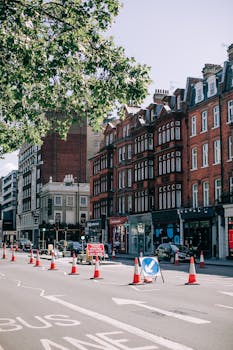
**
Westminster City Council has secured planning permission for a transformative regeneration project along Harrow Road, paving the way for a revitalized area boasting new homes, improved public spaces, and enhanced community facilities. This landmark decision marks a significant step forward for the area, promising to address long-standing challenges and create a more vibrant and inclusive neighborhood. The project, anticipated to cost hundreds of millions of pounds and take several years to complete, represents a major investment in the future of this key London thoroughfare.
A New Era for Harrow Road: Details of the Regeneration Project
The ambitious regeneration scheme, spanning several key blocks along Harrow Road, focuses on several key areas:
New Homes and Affordable Housing
A critical component of the project is the creation of much-needed new homes, with a significant portion dedicated to affordable housing. Westminster City Council has committed to delivering a substantial number of social rented homes and shared ownership properties, tackling the pressing issue of housing shortages in the area. The exact number of new homes remains subject to final development plans, but initial estimates suggest several hundred new residences will be built, significantly increasing housing density and providing much needed options for local residents. This commitment to affordable housing is crucial for ensuring the regeneration benefits all residents, preventing gentrification and preserving the diverse community character of the area.
Improved Public Spaces and Greenery
The regeneration project will significantly improve public spaces along Harrow Road. Plans include:
- Enhanced pedestrian areas: Widening pavements, creating more pedestrian-friendly walkways, and installing improved street furniture. This is designed to improve walkability and encourage more people to walk and cycle in the area.
- Increased green spaces: Introducing more planting, creating pocket parks and green walls, and improving existing green spaces to enhance biodiversity and provide more welcoming environments for residents and visitors.
- Improved lighting and security: Upgraded street lighting and enhanced security measures to create a safer and more welcoming atmosphere for all.
These improvements aim to foster a more pleasant and inviting environment, boosting local businesses and encouraging community interaction.
Enhanced Community Facilities
Recognizing the importance of community infrastructure, the regeneration project includes proposals to:
- Revamp existing community centers: Upgrading existing community facilities to provide better services and resources for local residents.
- Create new community spaces: Developing new community hubs and gathering spaces to encourage social interaction and provide a central location for community activities.
- Support local businesses: Implementing strategies to support and enhance local businesses, ensuring the regeneration benefits local entrepreneurs and keeps the unique character of Harrow Road alive.
These measures aim to foster a stronger sense of community and provide residents with improved access to vital resources and services.
Addressing the Challenges of Harrow Road Regeneration
The Harrow Road regeneration project isn't without its challenges. Key concerns that have been addressed during the planning process include:
- Traffic management: Minimizing disruption to traffic flow during the construction phase and creating more efficient traffic management systems once the project is complete.
- Preservation of local character: Balancing the need for modernization with the preservation of Harrow Road’s unique cultural heritage and distinct character.
- Consultation with the community: Ensuring extensive consultation with residents and businesses throughout the planning and implementation phases to incorporate their feedback and address their concerns.
Westminster Council's extensive consultation process, including public meetings, online surveys and direct engagement with local community groups, has been lauded for its inclusivity and responsiveness to the needs of the area's diverse population.
Economic Impact and Job Creation: A Boost for the Local Economy
The Harrow Road regeneration is expected to provide a significant boost to the local economy. The project will:
- Create construction jobs: Generating numerous jobs during the construction phase, providing employment opportunities for local residents.
- Attract new businesses: The improved infrastructure and public spaces are expected to attract new businesses to the area, leading to increased employment opportunities and economic growth.
- Increase property values: The improved housing and public spaces are expected to increase property values in the area, benefiting existing homeowners and providing a boost to the local tax base.
This comprehensive regeneration is a long-term investment aimed at creating a sustainable and prosperous future for Harrow Road and its residents.
Next Steps and Timeline for Harrow Road Regeneration
Following the granting of planning permission, the next stage will involve detailed design and construction planning. The council will now work closely with developers and contractors to finalize the detailed plans and establish a realistic timeline for the project. While a precise completion date isn't yet available, the project is expected to span several years. Regular updates on the project's progress will be provided by Westminster City Council through their website and community engagement channels.
The Harrow Road regeneration project marks a significant milestone in Westminster's ongoing commitment to revitalizing its neighborhoods and improving the lives of its residents. It promises to transform this key area of London, creating a vibrant, inclusive, and sustainable community for generations to come. This substantial investment underscores the council’s dedication to tackling housing shortages, improving infrastructure and creating thriving communities across Westminster. The success of this project will serve as a model for future regeneration initiatives across the city and potentially influence urban development strategies nationwide.




















